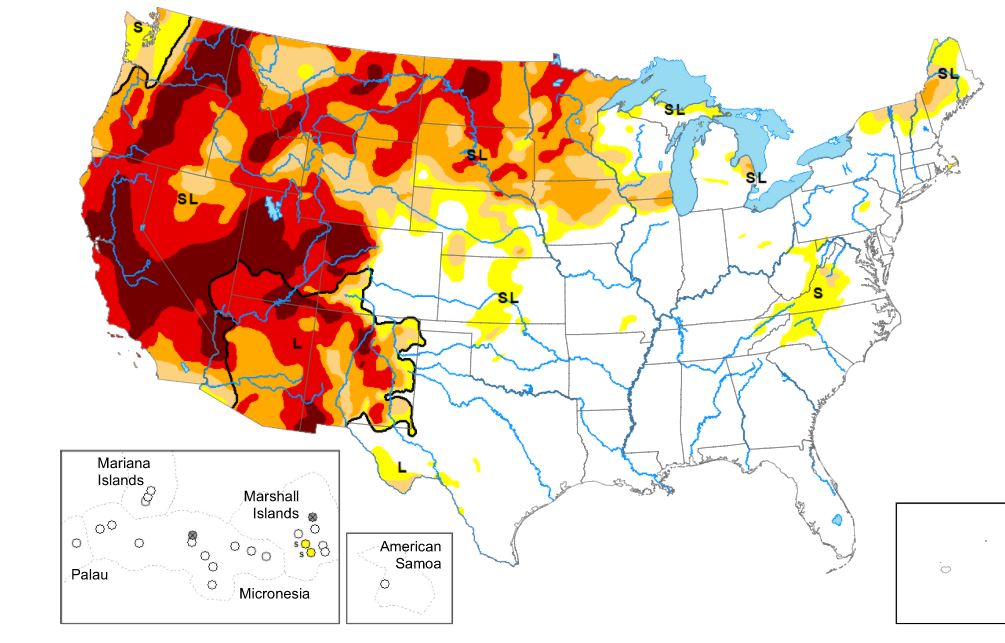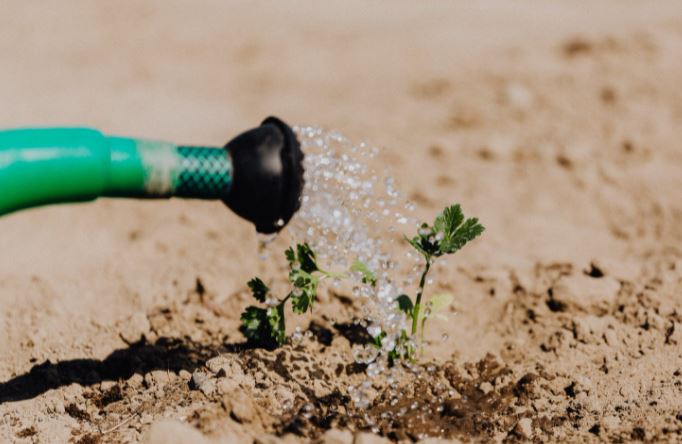In 2021 parts of the United States were in a drought. Droughts can occur in summer months when the weather is hot and rain is scarce, but can also occur in winter. Living in Illinois was awesome because there was so much rain. The plants there are always the most vibrant shades of green and we had beautiful rain storms perfect for reading a book and relaxing or playing outside with umbrellas and rainboots. Moving to Arizona made it immediately apparent that I ought to know not only how to conserve water in a desert, but also how to live in a drought. My first summer here I had plants turning brown and dying before my eyes. Everything was hot and very dry. I educated myself about steps to take when dealing with drought. I hope it helps you too.
Here is a link to find out about droughts in your area and around the U.S. https://droughtmonitor.unl.edu/

Choose Drought Tolerant Plants
When planning the garden, focus primarily on drought-tolerant plants. Once these are established, they can withstand prolonged dry spells. This should apply to all types of landscape plants except for vegetable and fruit plantings and edible crops.
Apply Mulch
Once the plants are in place, apply a layer of mulch to conserve soil moisture. This will reduce the need for watering.
Depending on your location, this might be an organic mulch, such as finely chopped leaves or pine bark. In some areas of the country, inorganic mulches, such as pea gravel or crushed stone are preferred. Organic mulches keep the soil cool, which also helps to slow evaporation.
Organic matter is especially beneficial during droughts. It increases the water-holding capacity of the soil, which is particularly critical for sandy soils. The two most popular organic matter are manure and compost., but you can also use sawdust and peat moss.
The ideal time to add this is when you’re preparing a new garden bed or vegetable plot. Add lots of composted manure and other organic matter. Till this into the soil before planting. Replenish organic matter each year. It becomes depleted over time.
Create Watering Zones
When planning garden beds, create watering zones by organizing plants according to their watering needs. This makes the most efficient use of water. For example, group roses together in one bed. Avoid scattering them around here and there in the landscape among plants that require more or less water. This approach allows you to water the entire bed at one time and only use the amount of water needed to keep each zone hydrated.
Consider using an underground watering system on an automatic timer. It will keep plants watered consistently while preventing over-watering. It will also prevent wasting water by using precise location rather than watering the sidewalk and other areas around the plants that don’t the precious resource.
Watering During a Drought
Assuming you’ve selected plants that can tolerate drought, infrequent watering will be needed. These plants have various ways of coping with dry conditions. For example, some trees and shrubs drop their leaves and go dormant. Cactus store water for long periods of time.
During a serious drought, municipalities sometimes place restrictions on outdoor water use. If that occurs, decide which plants are the most important. Use the precious water that is available for the selected plantings. Assuming it is allowed in your area, greywater is also an option. Greywater is water that you can recycle from washing machines and baths but never from toilets or kitchens.

Fertilizing During a Drought
Generally, fertilizers should be avoided during prolonged droughts. It is okay to fertilize during short ones if you know you’ll be watering on a regular basis throughout the entire season. If water is scarce, do not use fertilizer as it will cause chemical burns to your plants when not diluted with sufficient water.
You have just learned about five major components to caring for your outdoor plants and saving water in your landscape during dry conditions. Since half of the water we use at home is used outdoors, making strategic steps to save water will keep your yard looking nice even when facing a drought in your area.

